No Results Found
The page you requested could not be found. Try refining your search, or use the navigation above to locate the post.

Very special thanks to Maggie Hinton of Canadians Against Horse Abuse who writes:
Many Canadians and Americans do not realize that even though horse slaughter is currently not allowed in the United States, horses from both countries are slaughtered in Canada for human consumption.
Additionally, since 2012 draft horses have been shipped by air from Canada to Japan to be slaughtered for consumption, including for sushi.
The Canadian Meat Council, a member of the *Canadian Agri-Food Trade Alliance (CAFTA) coalition worked on a **deal with the Canadian Government and Japan to eliminate tarriffs on the export of horses from Canada to Japan for slaughter.
Since that time individuals and organizations including the Canadian Horse Defence Coalition(CHDC) have been lobbying the Canadian government to stop the shipment of live horses for slaughter to Japan.
CHDC issued the first press release on the subject of live horse exports to Japan for slaughter in 2012, and were quick to point out how shipping horses live to Japan is economically feasible, because the CFIA is turning a blind eye to their own shipping regulations…
“Footage taken of Alberta horses being shipped live to Japan for slaughgter shows that the Canadian Food Inspection Agency (CFIA) is violating their own standards set forth in the Health of Animals Regulations. The regulations prohibit the transportation of all animals under conditions that would expose the animals to undue injury or suffering.”
More recently CHDC sued the Canadian Food Inspection Agency, which is a Canadian Federal Government agency for blatantly ignoring international shipping regulations.
So again, like many others, you may be wondering how shipping horses by air to Japan could possibly be economically feasible.
Eliminating tariffs helped keep costs down. In addition, kill buyers and producers get away with keeping horses in crowded, wet, dirty, cold, feedlots without adequate shelter, including in winter — and we all know how cold Canadian winters can be. Horses are transported in crowded trailers to the airport.
Then because the Canadian Food Inspection Agency turns a blind eye, horses are shipped by air to Japan in flimsy, wooden crates, with as many as possible crammed into each crate. (Shipping regulations allow for one draft horse per crate, but that regulation is consistently ignored.)
When shipping by air, horses are denied basic nutrition and water, pushing the limit to what the horses can tolerate. Horses destined for slaughter travel to Japan without the watchful eye of a trained equine specialist. After all, that would mean an added expense.
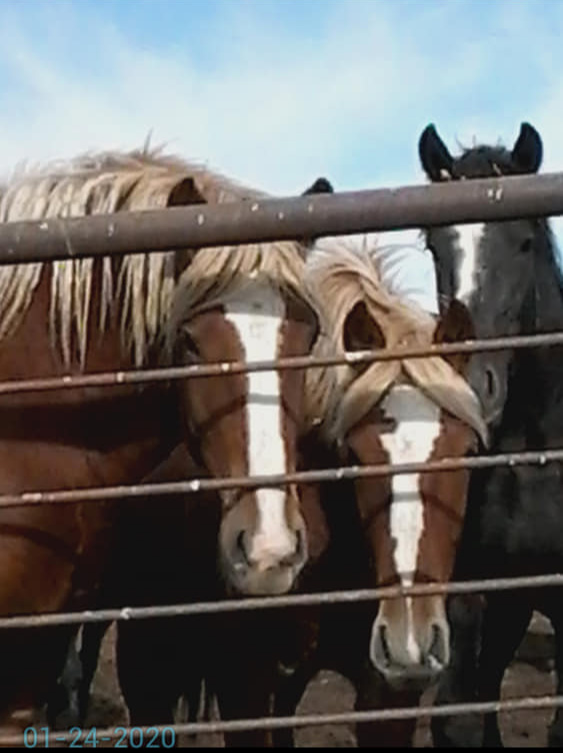
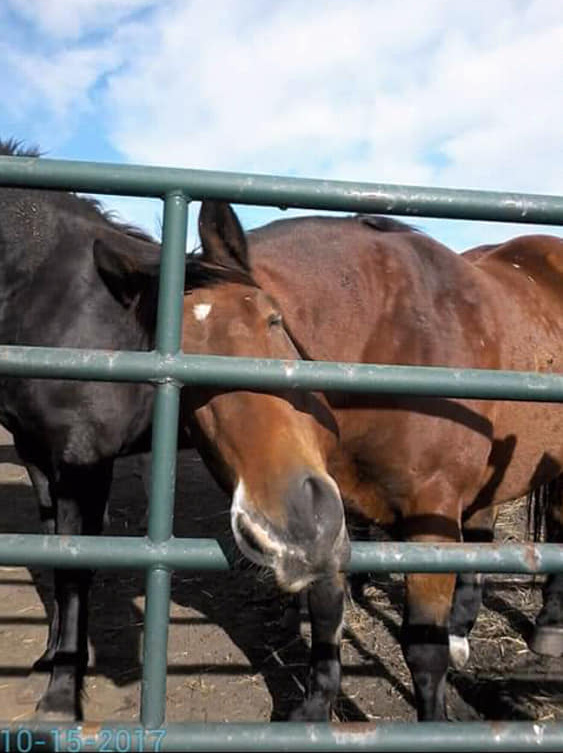
Pictures of horses in a holding pen in Alberta, Canada and destined for slaugher -- are courtesy of Christine Gallant.
*The Canadian Agri-Food Trade Alliance (CAFTA) is a coalition of national and regional organizations that support a more open and fair international trading environment for agriculture and agri-food. CAFTA’s members: Canola Council of Canada, Canadian Cattlemen’s Association, Pulse Canada, Soy Canada, Canadian Pork Council, Canadian Meat Council, Canola Growers Association, Grain Growers of Canada, Cereals Canada, Canadian Sugar Institute, Alberta Cattle Feeders Association, National Cattle Feeders Association, Barley Council of Canada. Based on domestic exports data for 2015, CAFTA’s members account 48 billion dollars of exports, representing 80% of the total value of Canadian agricultural and agri-food products exports.
**In 2012 Canada and Japan announced the launch of negotiations towards a comprehensive and high-level economic partnership agreement (EPA). The agreement known as the Canada-Japan Economic Partnership seeks to reduce and in some cases eliminated the non-tariff and tariff barriers that limits trade between the two nations.
CAFTA seeks expanded market access in Japan through the removal of import tariffs and non-tariff trade barriers.
CAFTA supports Canada’s participation in the EPA and believes it will significantly contributes to the growth and competitiveness of the agricultural sector.”
The following is page 2 of a 1,134 page report – a spread sheet:
https://www.international.gc.ca/trade-agreements-accords-commerciaux/assets/pdfs/tpp-ptp/2-D.Japan-Tariff-Elimination-Schedule.PDF (Global Affairs Canada)
“TARIFF SCHEDULE OF JAPAN (HS2012)
(Year 1 – 21 and subsequent years)
LIVE ANIMALS AND ANIMAL PRODUCTS – (NO TARIFFS with exception of 010121.290)
01.01 Live horses, asses, mules and hinnies
Horses
0101.21 Pure-bred breeding animals
010121.100 Certified as being those other than Thoroughbred,Thoroughbred-grade, Arab, Anglo-Arab or Arab-grade horses (hereinafter referred to as “light-breed horses”) in accordance with the provisions of a cabinet order
2 Other
010121.210(1) “Light-breed horses” certified as being those used for purposes other than horse-race and as being not pregnant in accordance with the provisions of a cabinet order
010121.290(2) Other 3,400,000 yen/each
0101.29 Other
010129.1001 Certified as being not “light-breed horses” in accordance with the provisions of a cabinet order
2 Other
010129.210(1) “Light-breed horses” certified as being those used for purposes other than horse-race and as being not pregnant in accordance with the provisions of a cabinet order “

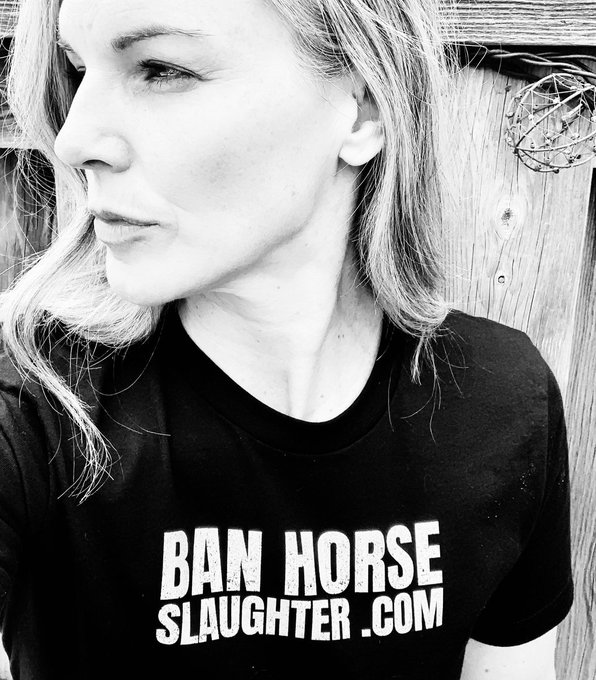
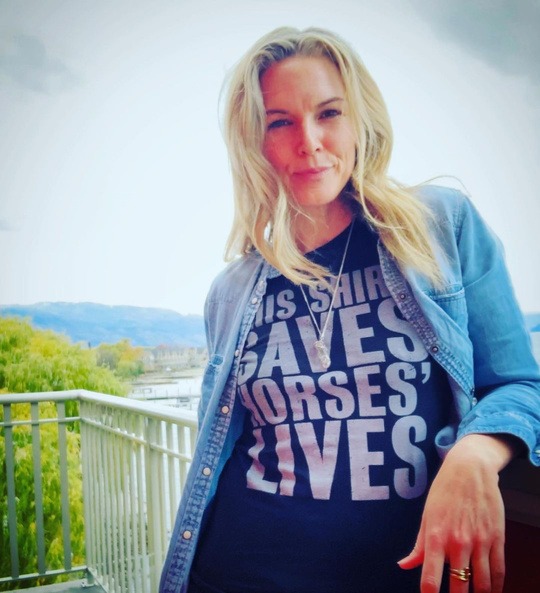
The page you requested could not be found. Try refining your search, or use the navigation above to locate the post.
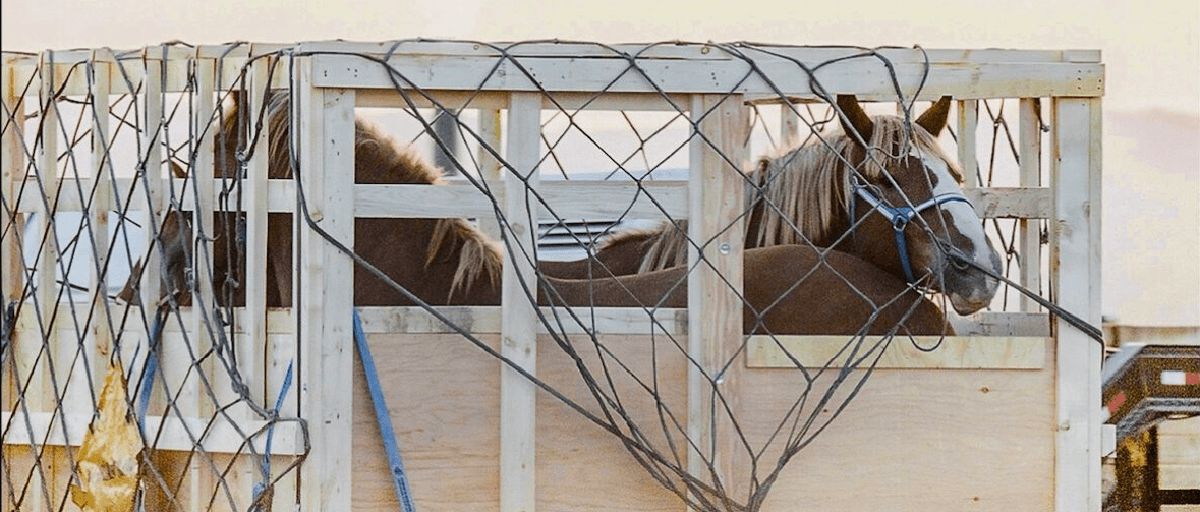
The Honourable Lawrence MacAulay, the current Minister of Agriculture and Agri-Food, has the power to end the inhumane export of horses by air for slaughter by enacting a regulatory amendment.
Help spread the word by sharing this email campaign with friends and family! You can also support the cause by donating—your contribution will help fund advertising efforts to raise awareness and push for change. Every action makes a difference!
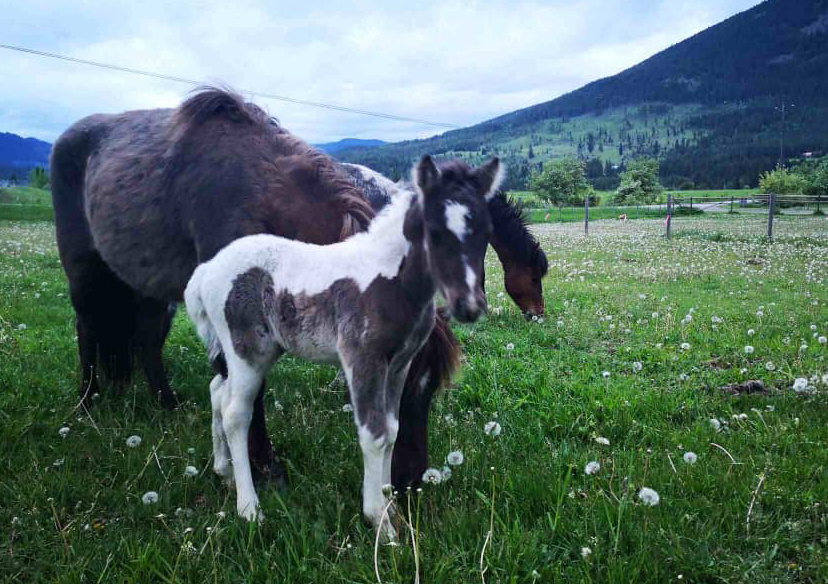
Equestrian Canada warns that due to income losses associated with Covid-19 many horses in Canada could be in jeopardy of being disposed of.
Disposal methods include horse auctions where many horses often end up in the hands of “meat” AKA “kill” buyers who sell horses to slaughter plants in Canada to be killed for human consumption. Kill buyers also buy directly from owners
CHEK news reported on a story involving the rescue of 31 ponies that were destined to be sold at an auction in Alberta but instead money has been raised to save and re-home these ponies.
Rebecca Sanesh of Humanity for Horses Rescue and Rehab spearheaded this rescue and addtitional funds will be needed for feeding and veterinarian care. PLUS Humanity for Horses has other equines in constant need of care.
Learn more about the story, watch a short video at CHEK NEWS here.
Follow up story and more video via CHEK NEWS here.
Contribute via Go Fund Me to help these ponies AND OTHER equines in the care of Humanity for Horses.
Learn more about Humanity for Horses here.




The page you requested could not be found. Try refining your search, or use the navigation above to locate the post.

The Honourable Lawrence MacAulay, the current Minister of Agriculture and Agri-Food, has the power to end the inhumane export of horses by air for slaughter by enacting a regulatory amendment.
Help spread the word by sharing this email campaign with friends and family! You can also support the cause by donating—your contribution will help fund advertising efforts to raise awareness and push for change. Every action makes a difference!

Once again we’d like to thank Jann Arden for all she does to help support the banning of horse slaughter for human consumption.
American horses are routinely exported to Mexico and to Canada to be slaughtered.
Horses raised in Canada, including pet horses and discarded race horses, are slaughtered in Canada and horses are also shipped live from Canada to Japan to be slaughtered there.
The Canadian Horse Defence Coaltion is currently suing the Canadian Food Inspection Agency for blatantly ignorning international shipping regulations and allowing horses to be shipped in conditions that are inhumane.
You can save horses’ lives with one of these T-shirts @ban.horse.slaughter help stop beautiful horses from being shipped overseas for human consumption. It’s awful…



The page you requested could not be found. Try refining your search, or use the navigation above to locate the post.

The Honourable Lawrence MacAulay, the current Minister of Agriculture and Agri-Food, has the power to end the inhumane export of horses by air for slaughter by enacting a regulatory amendment.
Help spread the word by sharing this email campaign with friends and family! You can also support the cause by donating—your contribution will help fund advertising efforts to raise awareness and push for change. Every action makes a difference!
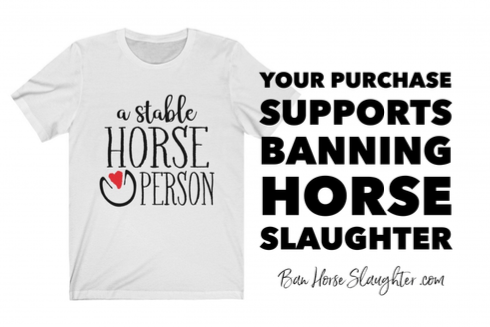
VERY special thanks to Patti Lippert for all that she does for so many.
Patti is tireless in her efforts to support horse AND donkey rescues. She’s also constantly working to help protect wild horses, and is a dedicated advocate for the banning of horse slaughter within Canada and beyond.
Patti not only gives of her time but she’s constantly donating funds and in this case she’s commissioned a design for a T-shirt!
Thank you Patti – you are AMAZING. M xo
P.S. January 2021: These limited edition items are sadly no longer available but may we suggest on of our other t-shirts, sweatshirts or re-usable totes with proceeds benefiting Horse Rescue Fund.



The page you requested could not be found. Try refining your search, or use the navigation above to locate the post.

The Honourable Lawrence MacAulay, the current Minister of Agriculture and Agri-Food, has the power to end the inhumane export of horses by air for slaughter by enacting a regulatory amendment.
Help spread the word by sharing this email campaign with friends and family! You can also support the cause by donating—your contribution will help fund advertising efforts to raise awareness and push for change. Every action makes a difference!
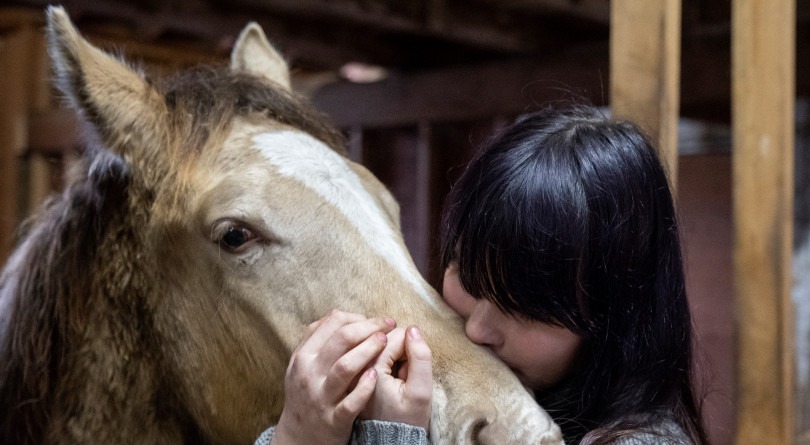
Photo by: Jen Osborne
“These activists are trying to change that.
The Canadian Horse Defence Coalition is waging a court battle to end Canada’s role as an exporter of live horses and frozen horsemeat for human consumption.”
Marie writes:
Thank you Canadian Horse Defence Coalition for all you do to help so many!
AND thank you to Maclean’s Canada for running this article to help raise awareness.
Canadians of courrse recognize Maclean’s magazine but for those reading from outside of Canada, this is a nationally recognized publication that was founded in 1905, and reports on Canadian issues such as politics, pop culture, and current events.
Mann had read the Canadian animal-health regulations which require horses over 14 hands high to be shipped solo in containers large enough to allow them to stand in a natural posture.
But she had routinely observed groups of three or four large horses being loaded into one crate with ceilings so low their ears poked through the top.
“There was no way they had enough room,” she says.
She condensed her footage into a three-minute YouTube video and in 2012 gave it to Sinikka Crosland at the Canadian Horse Defence Coalition, an animal rights group lobbying to stop the slaughter of horses.
Here, thought Crosland, was the perfect opportunity to raise awareness for their cause.
Photo at top of this post: A rescue farm in Duncan, Vancouver Island, holds horses that have avoided slaughter (Photograph by Jen Osborne)



The page you requested could not be found. Try refining your search, or use the navigation above to locate the post.

The Honourable Lawrence MacAulay, the current Minister of Agriculture and Agri-Food, has the power to end the inhumane export of horses by air for slaughter by enacting a regulatory amendment.
Help spread the word by sharing this email campaign with friends and family! You can also support the cause by donating—your contribution will help fund advertising efforts to raise awareness and push for change. Every action makes a difference!
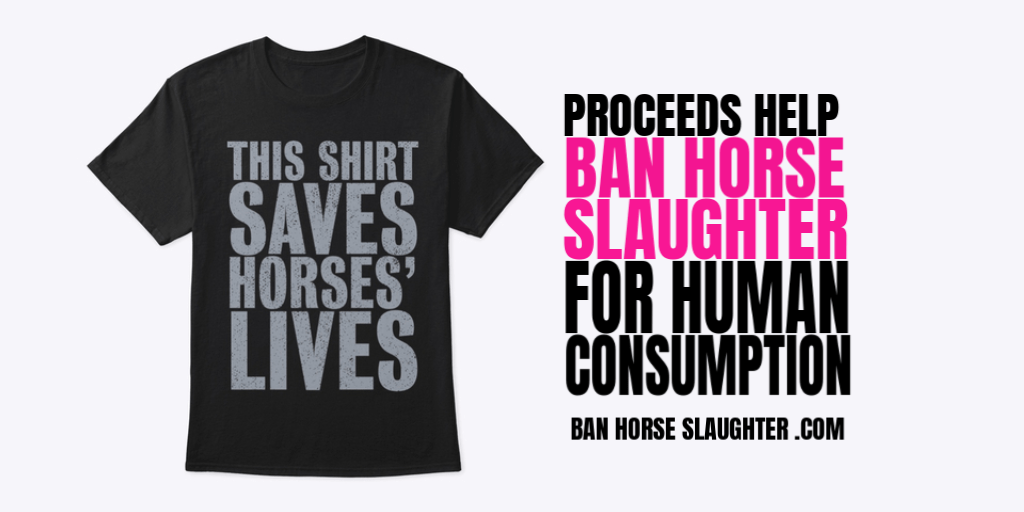
UPDTE NOVEMBER 2021:
Back for the first time since JUNE of 2020. Once again available for a limited time.
Proceeds from this t-shirt go to helping our friends at Horse Rescue Fund.
Horse Rescue Fund is dedicated to raising funds and distributing those funds to equine rescues and sanctuaries in Canada and the United States that are registered charities — or not.
Horse Rescue Fund also recognizes the need, especially during these turbulent times, to help individuals who are trying to do the right thing, but struggling to care for their equines.
There are many cases where what might end with a beloved horse being sent to slaughter, euthanized, sold or relinquished can be prevented by a gift of funds.
Horse Rescue Fund strives to raise awareness about the necessity of education on all aspects of equine ownership.
Through education Horse Rescue Fund believes that the number of horses being slaughtered for human consumption, and the number of other horses in need, will diminish.
Horse Rescue Fund also supports efforts to save (evacuate, vet, stable and feed) equines during and after natural disasters such as forest fires, flooding, mudslides, etc.
Look closely and you’ll notice that actress Kate Drummond is wearing a limited edition T-shirt. (Sorry it’s sold out BUT click the button below for another very special t-shirt.)
Proceeds from the sales of this T-shirt go towards banning the slaughter of horses within Canada and beyond.
Kate posts… “I’m just a girl, sitting in the middle of racks of couture, asking one of them to be the perfect dress 😉💕🙏 Thank you Jordan Stewart for the delicious afternoon of dress up, friendship-building and laughs. I am so excited to wear your masterpiece at the CSAs this month. 🔥 ”



The page you requested could not be found. Try refining your search, or use the navigation above to locate the post.

The Honourable Lawrence MacAulay, the current Minister of Agriculture and Agri-Food, has the power to end the inhumane export of horses by air for slaughter by enacting a regulatory amendment.
Help spread the word by sharing this email campaign with friends and family! You can also support the cause by donating—your contribution will help fund advertising efforts to raise awareness and push for change. Every action makes a difference!